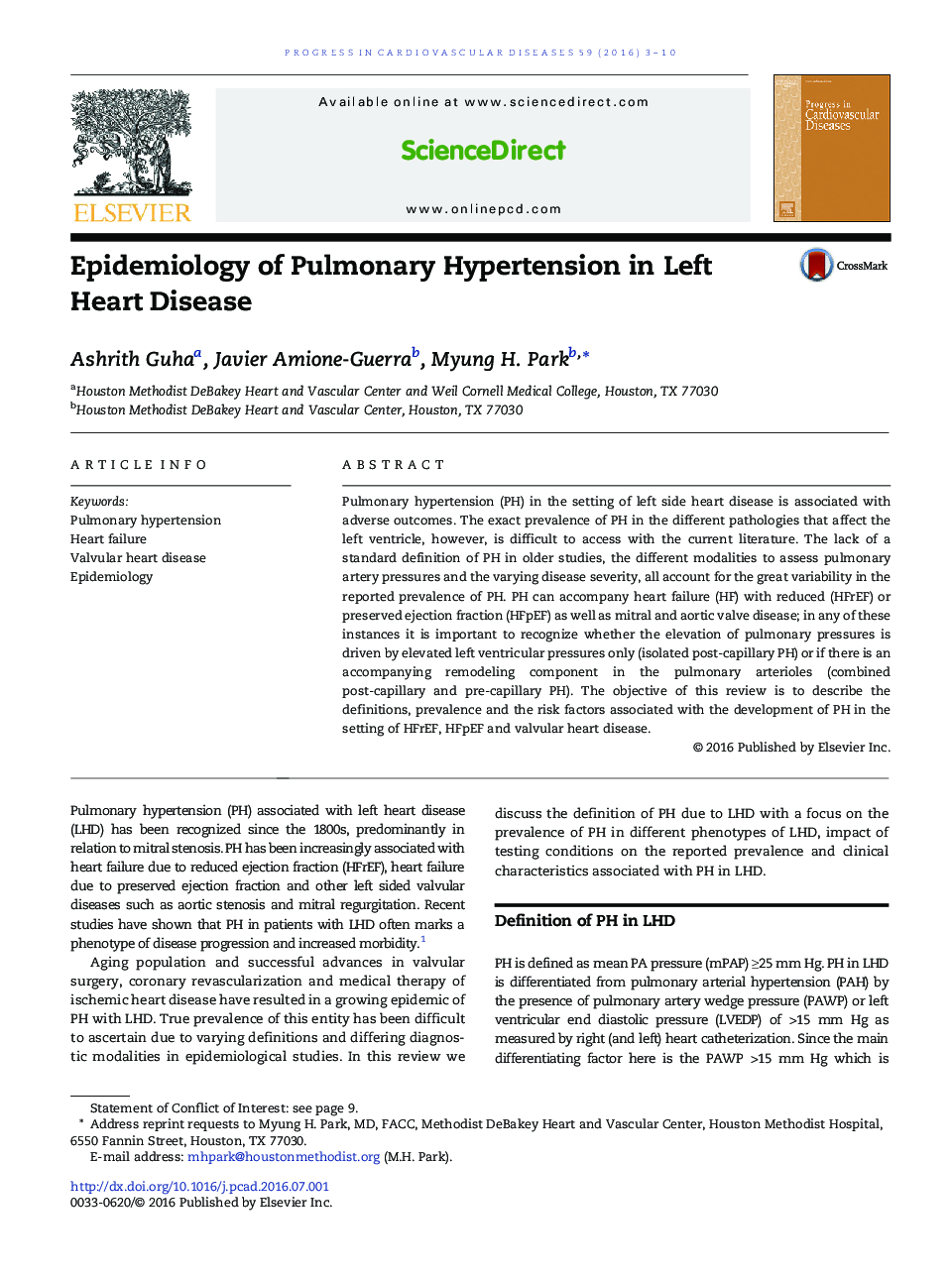| Article ID | Journal | Published Year | Pages | File Type |
|---|---|---|---|---|
| 5619658 | Progress in Cardiovascular Diseases | 2016 | 8 Pages |
Pulmonary hypertension (PH) in the setting of left side heart disease is associated with adverse outcomes. The exact prevalence of PH in the different pathologies that affect the left ventricle, however, is difficult to access with the current literature. The lack of a standard definition of PH in older studies, the different modalities to assess pulmonary artery pressures and the varying disease severity, all account for the great variability in the reported prevalence of PH. PH can accompany heart failure (HF) with reduced (HFrEF) or preserved ejection fraction (HFpEF) as well as mitral and aortic valve disease; in any of these instances it is important to recognize whether the elevation of pulmonary pressures is driven by elevated left ventricular pressures only (isolated post-capillary PH) or if there is an accompanying remodeling component in the pulmonary arterioles (combined post-capillary and pre-capillary PH). The objective of this review is to describe the definitions, prevalence and the risk factors associated with the development of PH in the setting of HFrEF, HFpEF and valvular heart disease.
